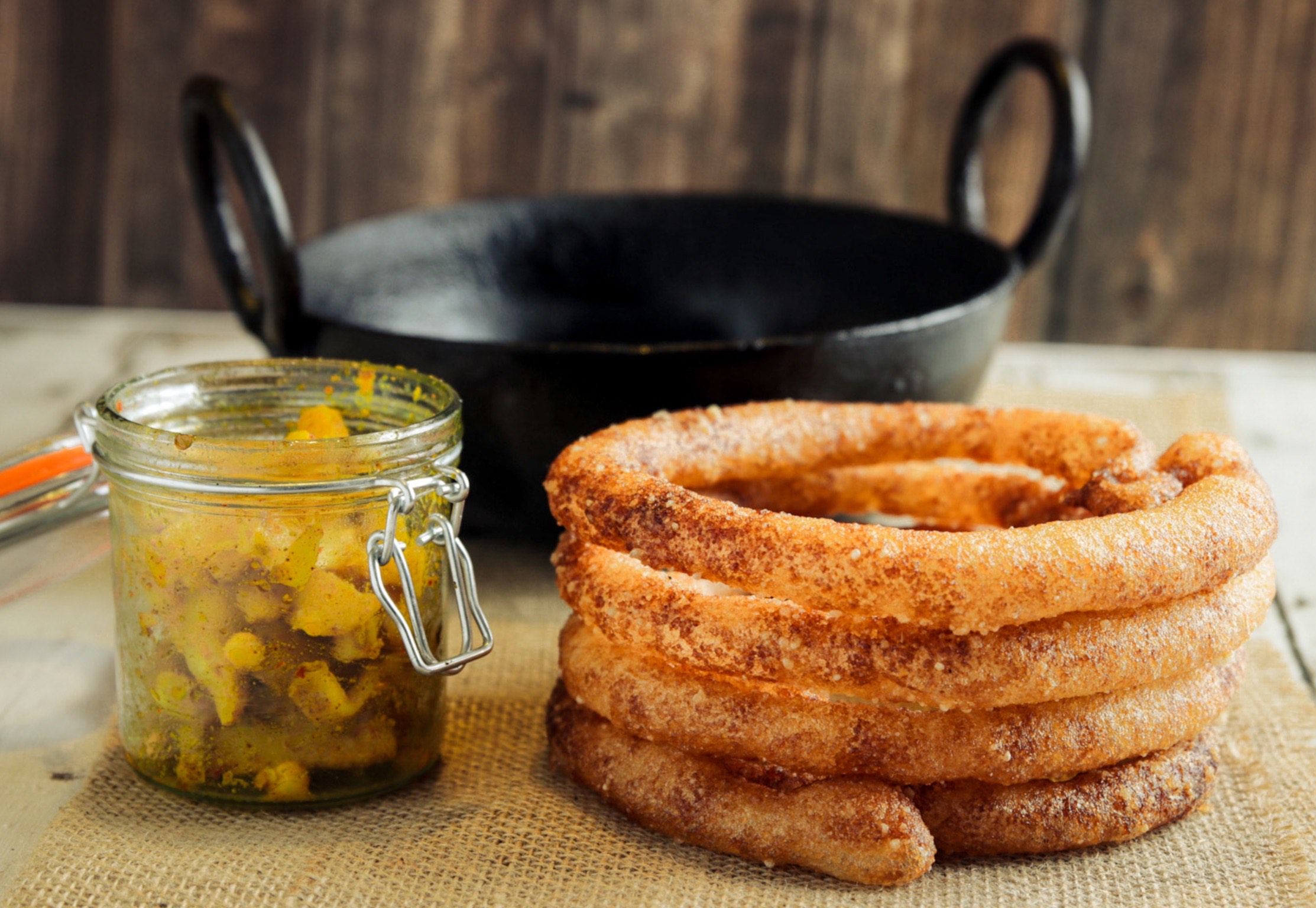- Tags: Vegetarian, Festive, Street food, Traditional
Selroti
Prep Time
40 Mins
Difficulty Level
Intermediate
Serves
8
Cusine
Nepali
Meal Type
Snacks
Ethnic Group
Newar, Magar/Gurung, Common Across Multiple Groups

About Recipe
Ingredients
-
2 cups uncooked rice (jeera rice or any short grain)
-
¾ to 1 cup sugar (adjust to taste)
-
2 tbsp melted ghee (or unsalted butter)
-
Ghee or oil for deep frying
Preparation Method
There is a sacred quiet that falls over a kitchen the morning Sel Roti is made. The oil is still cool, the batter rests, and the air holds the anticipation of something deeply familiar. This is not just a breakfast or a sweet — it is a ritual, a celebration of light, homecoming, and offering. It is the ringed memory of a mother’s hand and the echo of bhai tika laughter in distant courtyards.
Begin a day in advance. Take 2 cups of uncooked rice — jeera rice is preferred, but any short grain will do — and wash it gently, as if waking something dormant. Let the rice soak overnight in cool water, so it softens, swells, and remembers.
The next day, drain the rice and let it rest in a sieve or clean cloth, just until the excess water slips away. Then grind it — in small batches — with care. Add ¾ to 1 cup of sugar, depending on your taste for sweetness, and blend until the grains break down into a thick, almost pourable paste. Into this, fold 2 tablespoons of melted ghee (or unsalted butter) — the ghee gives a subtle richness, a flavor that sings softly at the edges.
Let this batter sit. Twenty to thirty minutes is enough for the flavors to bind — or longer, if your kitchen is cool and quiet.
When ready, heat ghee or oil in a small, deep pan — the kind your grandmother used for making tarkari on winter mornings. Test the heat by letting a small drop of batter fall in. If it rises and sizzles gently, the oil is ready.
Then, with confidence and rhythm, pour the batter into the hot oil in a circular motion — letting the batter loop and kiss itself into a ring. This is an art, not a science. Your first may wobble, but by the second or third, you will find the motion that remembers your lineage. Fry each ring until it turns a deep, glowing gold, flipping gently once to cook both sides. The edges will crisp; the inside will swell with airy softness.
Lift the Sel Roti out of the oil, letting it rest on a wire rack or cloth. It will cool and settle into itself.
Serve warm, with milky chiya or a tangy aloo tarkari, or gift it, as we often do, to those we love — as part of tika trays, puja offerings, or morning tea rituals that stretch across generations.
